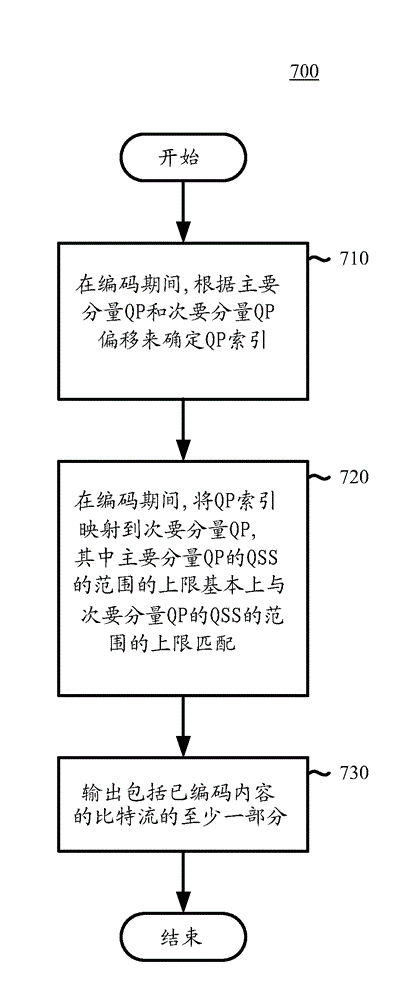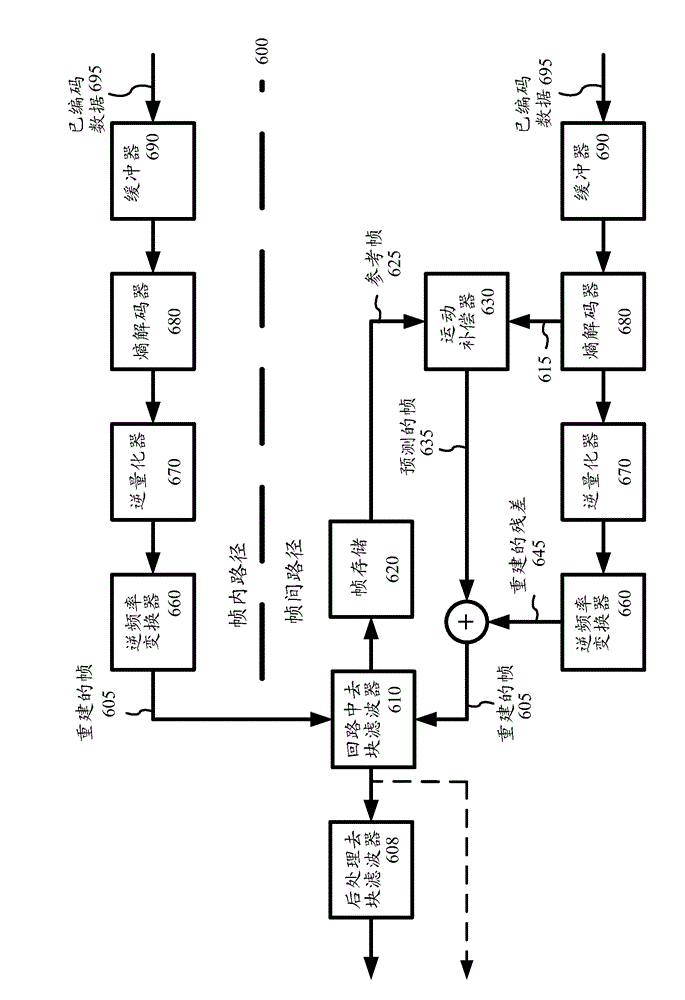Extended range for chroma QP values
A chromaticity and range technology, applied in image communication, digital video signal modification, electrical components, etc., can solve the problems of lack of fine-grained control and inability to provide responsiveness
- Summary
- Abstract
- Description
- Claims
- Application Information
AI Technical Summary
Problems solved by technology
Method used
Image
Examples
Embodiment Construction
[0027] An important aspect of the design for the compression of video content and other image content using a multi-component color space representation is the control over the granularity of the quantization of each color component. Such control is typically achieved by establishing a proportional relationship between the quantization step size(s) associated with one color component (often referred to as the primary component) and the other color component (often referred to as the secondary component). Typically, the primary component is a luma component and the secondary component(s) is a chrominance component(s).
[0028]For example, in the ITU-T H.264 standard, the relationship between QP for luma and chroma components is in terms of QP values, look-up tables, and encoder-controlled offsets, sometimes together with The scaling factors are determined together with the quantized scaling matrix. With regard to this aspect of encoding control for QP, existing designs have so...
PUM
 Login to View More
Login to View More Abstract
Description
Claims
Application Information
 Login to View More
Login to View More - R&D
- Intellectual Property
- Life Sciences
- Materials
- Tech Scout
- Unparalleled Data Quality
- Higher Quality Content
- 60% Fewer Hallucinations
Browse by: Latest US Patents, China's latest patents, Technical Efficacy Thesaurus, Application Domain, Technology Topic, Popular Technical Reports.
© 2025 PatSnap. All rights reserved.Legal|Privacy policy|Modern Slavery Act Transparency Statement|Sitemap|About US| Contact US: help@patsnap.com



